Canon Pixma iX7000 Review
Canon Pixma iX7000
An interesting A3+ inkjet printer designed as much for plain paper as photo paper print, but black print quality has some problems.
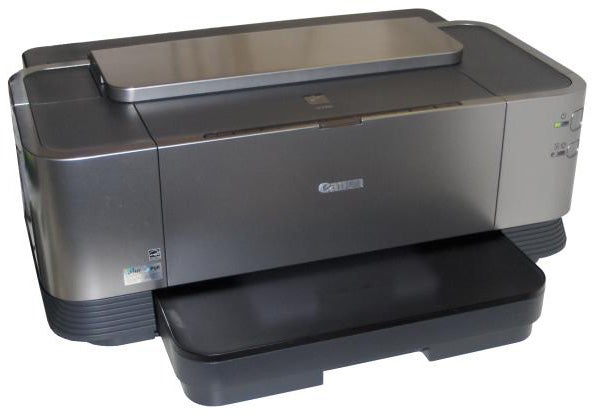
Verdict
Key Specifications
- Review Price: £313.82
Most inkjet printers designed to handle paper up to A3+ are aimed primarily at the photo enthusiast or graphics professional. However, Canon’s Pixma iX7000 is directed at the small office market, where plain paper prints are more prevalent and larger page sizes are needed more for posters, flipcharts and other business prints. That’s not to say this machine can’t produce good photo images at the larger size, but that they aren’t its main function.
As you might expect, this isn’t a small machine. It’s wider than nearly all the printers we’ve tested and when fully open for A3+ print, it’s nearly as deep as it is wide. Fortunately, when printing small sizes, both its input and output trays can be telescoped in, saving a lot of space, and the rear tray, which is reserved for photo paper, can be folded down onto the printer’s top cover.
There are three separate paper sources on the Pixma iX7000, with the 250-sheet paper cassette slotting in at the front, a 20-sheet rear feed tray and a further 10-sheet manual feed at the front, above the output tray. This makes the machine very versatile, as you can keep plain paper loaded, while printing from either of the other two sources.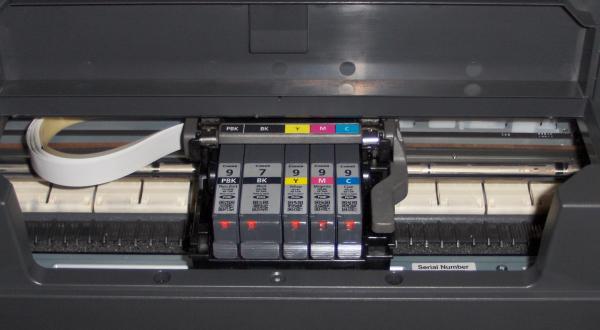
As you might expect, controls are minimal, with a large button and indicator for power and a smaller one for paper feed. There’s no front panel USB socket, which is a bit of a shame, but there are sockets at the back for USB and Ethernet.
Lift the printer’s lid and the head carrier slides into view, holding twin black cartridges (text and photo inks) together with cyan, magenta and yellow ones for full, four-colour print. Canon ‘s helpful LED indicators are used to show when the cartridges are correctly inserted and when any inks are getting low and in need of replacement.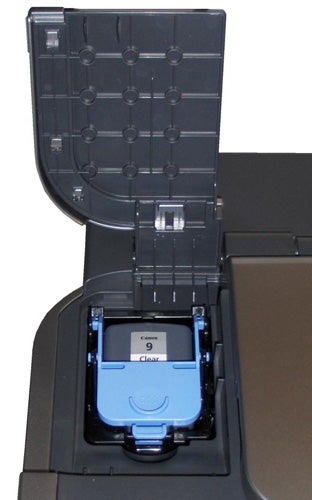
There’s a sixth cartridge, though, positioned under a cover to the left of the printer carriage. Marked Clear, this ink coat is applied by roller to each sheet of plain paper, so that Canon’s ‘Lucia’ pigment inks sit on the coating and not directly on the paper. Canon claims this leads to brighter, more detailed prints on untreated papers.
Support software includes Easy-Photo Print and easy-Web Print and drivers are supplied for both Windows and OS X.
Canon is a lot more reasonable with its speed claims than most other printer makers and specifies the Pixma iX7000 at 10.2ppm for black print and 8.1ppm for colour, both printing A4 pages. In our tests, we saw a maximum speed of 8.6ppm, printing 20 pages of black text, which is not far off the headline figure. When it comes to colour, though, we only saw 4.8ppm, a little over half the claimed speed.
These speeds are still not bad for an inkjet machine, though, and hold up well when printing on pages larger than A4. An A3 photo printed on plain paper took just 45 seconds, a very impressive time.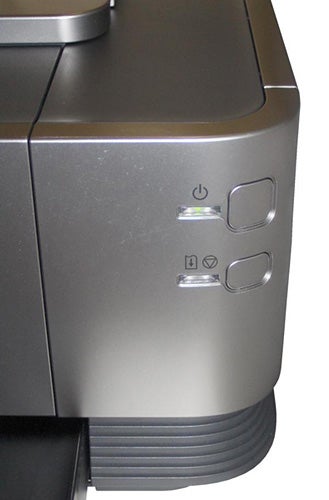
Less impressive is the duplex speed. This printer offers duplex print as standard, but when we printed our 20-page text document as 10-page duplex, the speed dropped to 3ppm, taking 6mins 37secs to complete. This is slow enough to hit office productivity and it’s doubtful many people will do much duplex printing on this machine.
A lot is made of the plain paper print quality of the Pixma iX7000, though we have some misgivings. While black text is dense, we noticed some missed registration from one sweep of the print head to the next and a certain amount of spiking around characters, indicating ink run. Text print was not as clean as from some other Canon machines.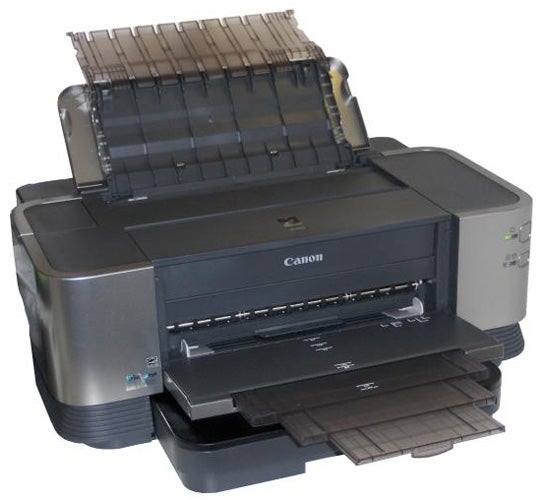
Colour graphics are certainly bright and dense, with no signs of dither patterns, and are impressive. Our test photo print on plain paper, once the paper was given time to dry, was also good, though there was some slight banding and a little patchiness in darker areas of the image.
Photo images on Canon’s photo paper are clean and smooth with good levels of detail, including in the shadows. A full A3 print showed that this machine is capable of very passable, large-scale photos.
Since the clear coat is used on all plain paper prints, we’ve included its cost in both black and colour page costs. A4 black pages come out at 3.1p and colour ones at 6.2p. The colour cost is lower than from most colour inkjets and the black cost is competitive, so providing yourself with outsize print is not going to cost extra, page for page, though A3 pages will, of course, cost more than A4 to print.
Verdict
The attractions of the iX7000 over a colour laser printer are the same as for any inkjet. It produces better colour and can print quality photos on glossy photo paper. The detractions are the same, too, as a typical laser will be quicker and produce better black text quality. You won’t find an A3 laser for £300, of course, and if the size is important in your office, this machine is a good choice.
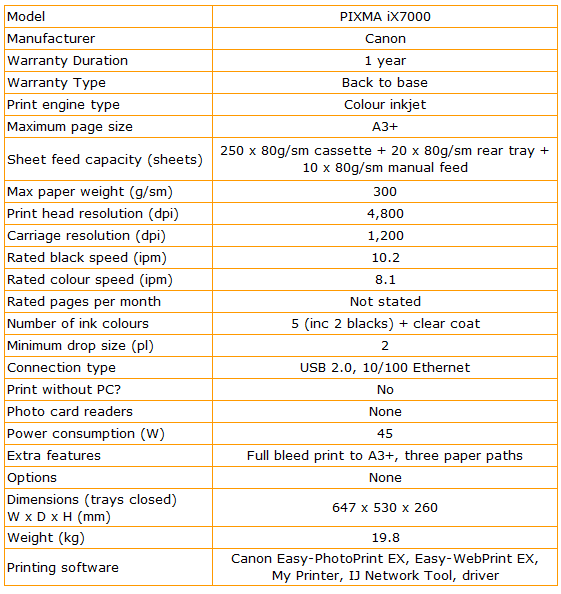
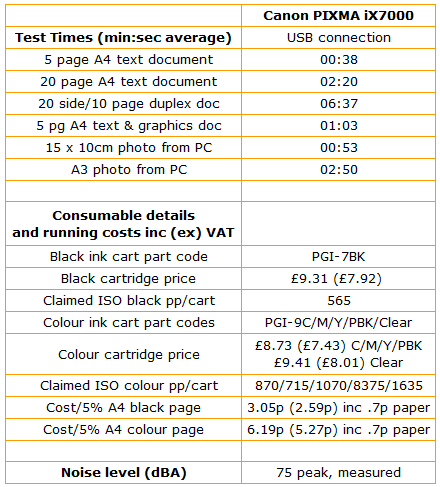
Trusted Score
Score in detail
-
Print Speed 8
-
Features 8
-
Value 6
-
Print Quality 7
Features
| Networking | Fast Ethernet |
Printing
| Duplex | Automatic |
| Paper Size | Letter, Legal, Envelope No. 10, 4" x 6", 5" x 7", 8" x 10", 11" x 17", 13" x 19", A3+, A3, A4, A5, B4, B5, DL Envelope, Com10 Envelope, 200 mm x 250 mm, 130 mm x 180 mm, 100 mm x 150 mm, Ledger, 250 mm x 300 mm |
| Sheet Capacity | 510 sheets, 270 sheets |
| Rated Black Speed (Images per minute) | 10 ppmipm |
| Rated Colour Speed (Images per minute) | 8 ppmipm |

